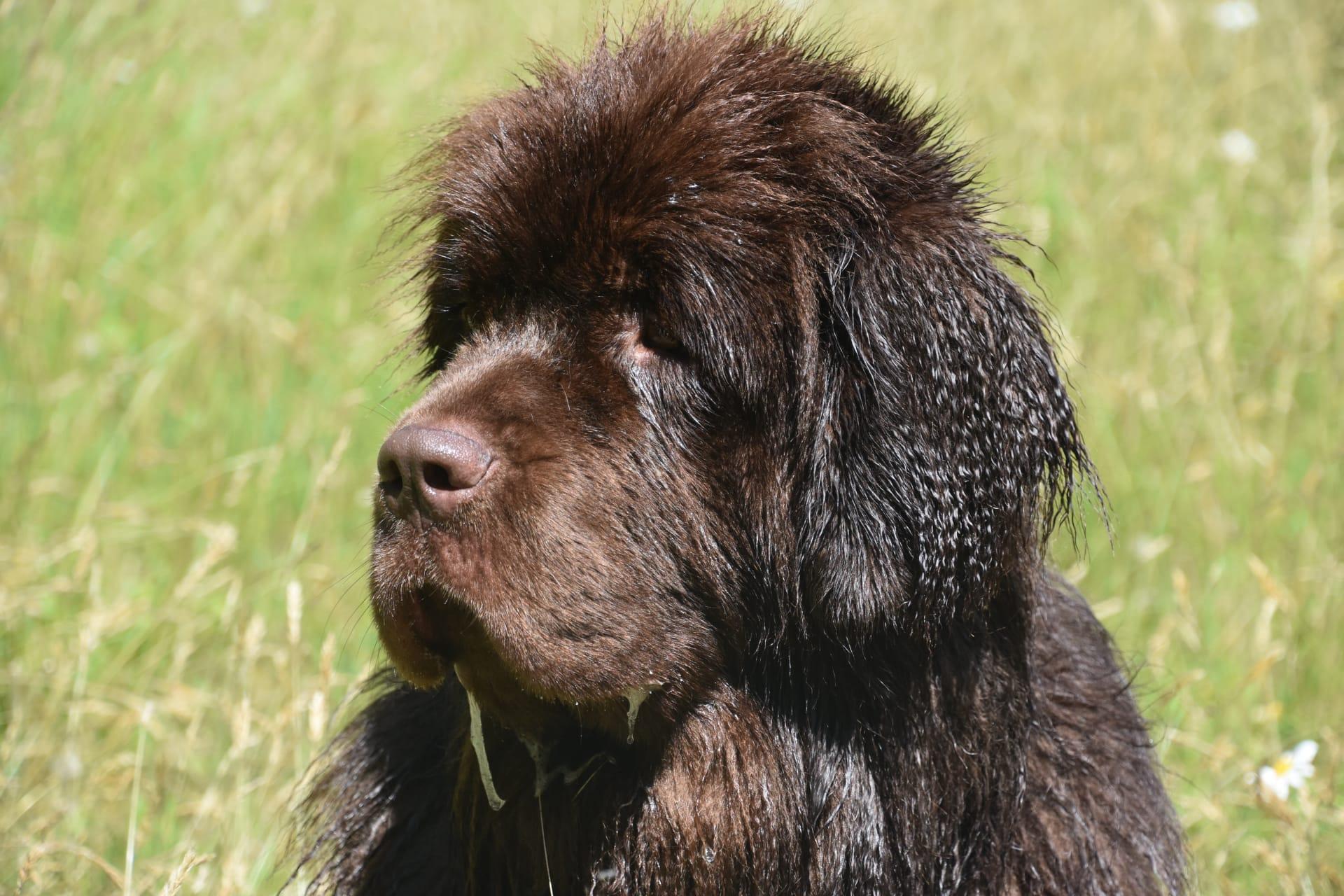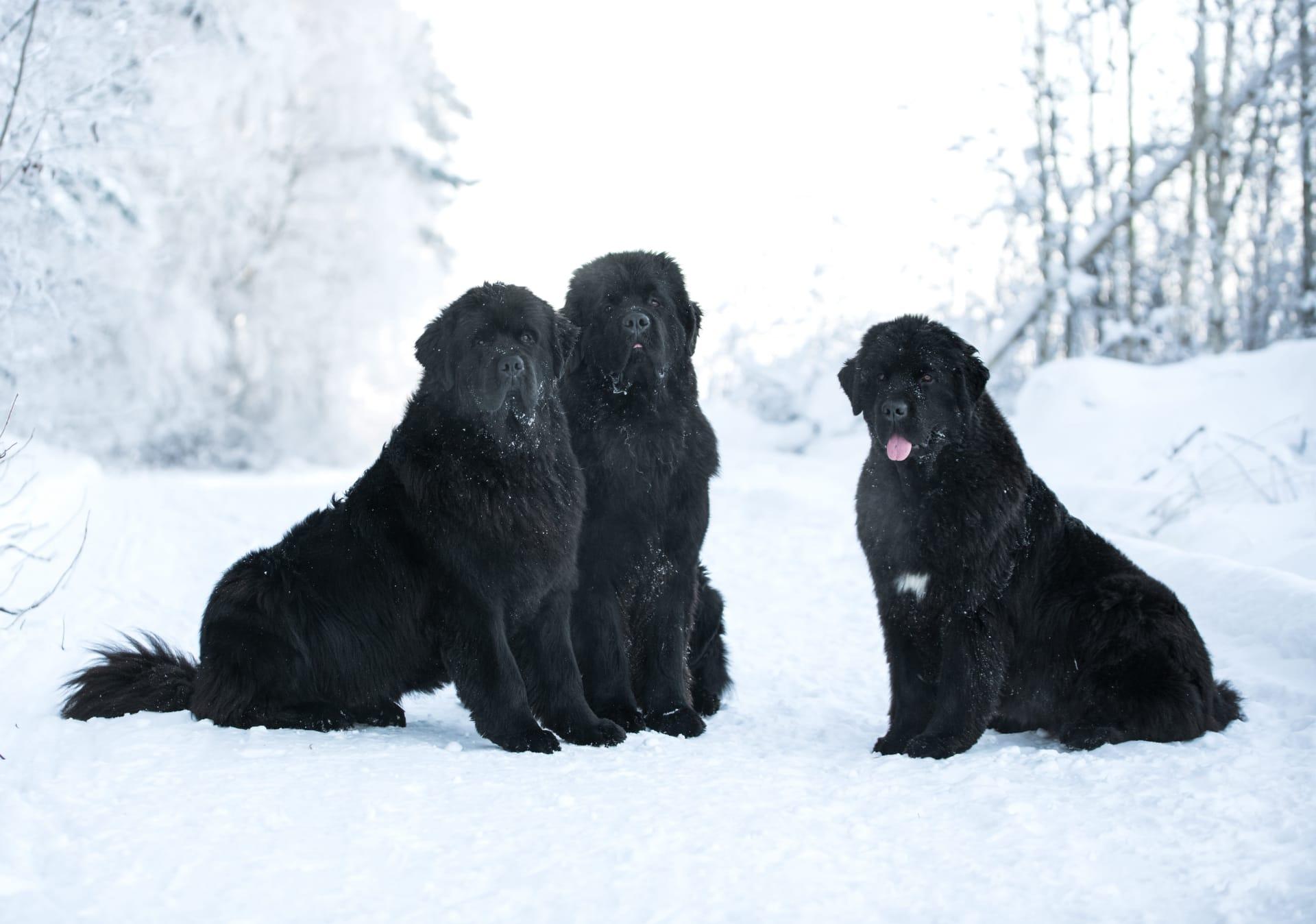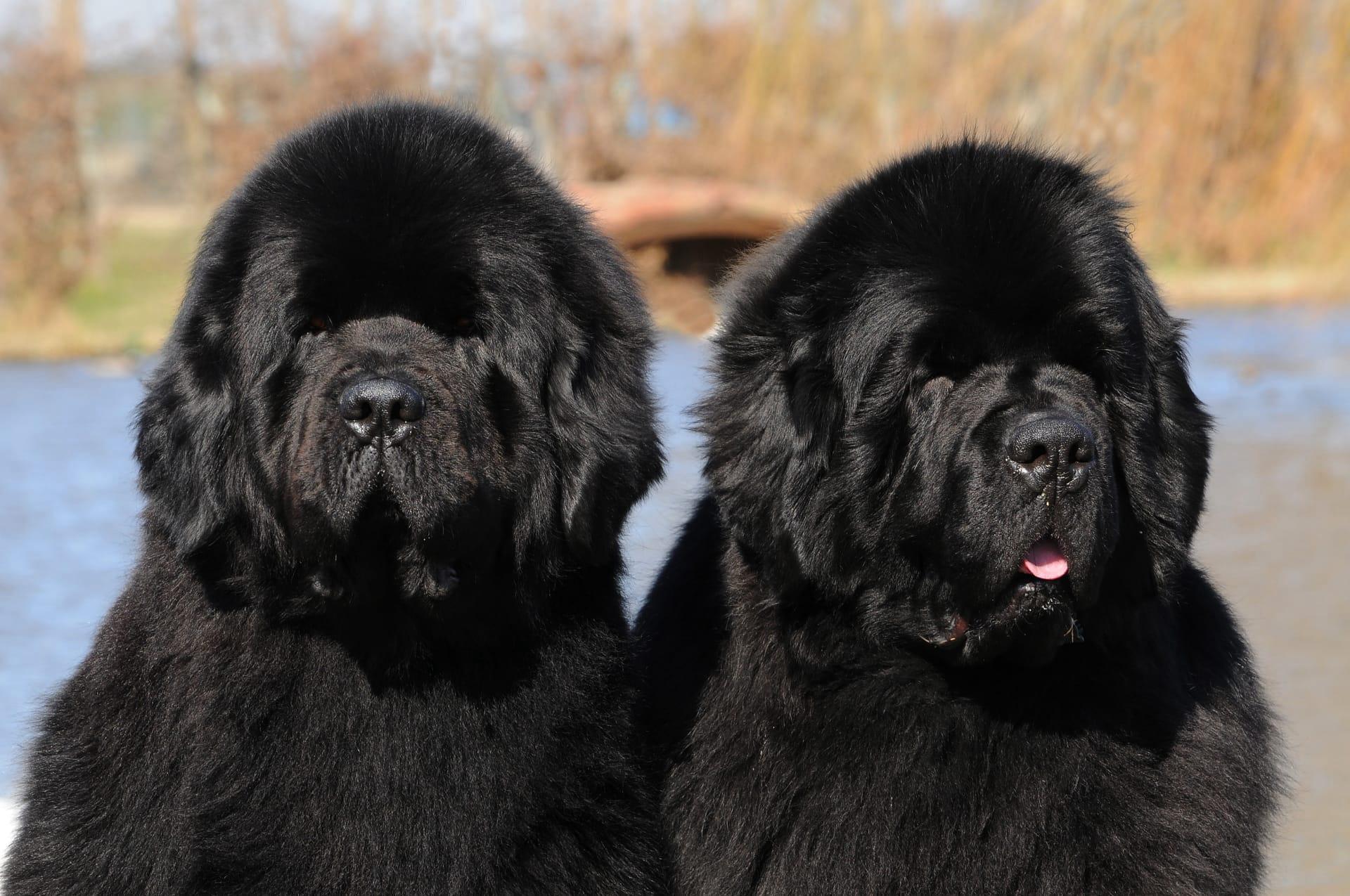Newfoundland Dog Characteristics
- Home /
- Mini Encyclopedia /
- Animal /
- Newfoundland Dog Characteristics
1
Newfoundland dogs, known for their massive size and strength, are true gentle giants of the canine world. These dogs typically weigh between 100 to 150 pounds (45 to 68 kilograms) and stand about 26 to 28 inches (66 to 71 cm) tall at the shoulder. Their lifespan ranges from 8 to 10 years, which is quite standard for dogs of their size. Newfoundland dogs possess a thick, water-resistant double coat that helps them stay warm in cold climates, and their massive paws act like natural paddles in the water.
The most remarkable organ of the Newfoundland dog is undoubtedly its webbed feet. This unique adaptation allows them to be excellent swimmers. The webbing between their toes increases the surface area of their paws, enhancing their ability to paddle through water. This trait, combined with their powerful build and water-resistant coat, makes them natural lifeguards. Historically, Newfoundland dogs have been used for water rescues, capable of pulling nets for fishermen and saving people at risk of drowning.

2
Question: What is the most effective way to groom a Newfoundland dog's coat to prevent matting and ensure their comfort?
Answer: Grooming a Newfoundland dog requires regular brushing, at least three times a week, with a focus on their dense undercoat to prevent matting. Using a slicker brush and a long-toothed comb helps to remove loose hair and detangle the undercoat effectively. During shedding seasons, daily brushing may be necessary to manage the increased hair loss. It's also important to regularly check and clean their ears, trim their nails, and ensure their webbed feet are free from debris. Bathing should be done every few months or as needed, using a dog-specific shampoo to maintain the health of their thick coat.

3
Newfoundland dogs are not high-energy dogs but require regular exercise to maintain their health and prevent obesity. A daily moderate walk or a swim is ideal for them, as swimming leverages their natural abilities and provides excellent low-impact exercise. They enjoy outdoor activities that allow them to stretch their legs and explore, but their exercise needs are surprisingly moderate considering their size.
When it comes to feeding, Newfoundland dogs require a well-balanced diet that is tailored to their size, age, and activity level. An adult Newfoundland typically eats about 4 to 5 cups of high-quality dry dog food divided into two meals per day. It's crucial to monitor their food intake and adjust portions to prevent overfeeding, as they can be prone to obesity. Supplements like fish oil can be beneficial for their coat and joint health, especially considering their large size and predisposition to hip dysplasia.

4
Newfoundland dogs thrive in cooler environments, thanks to their thick, insulating coat. They are well-suited to life in spacious, rural areas where they have plenty of room to move around but can adapt to various living situations as long as they have enough space and are not exposed to excessive heat. Access to water for swimming is a plus, as it provides them with a comfortable and enjoyable way to exercise.
Reproduction-wise, Newfoundland dogs reach sexual maturity at about two years of age. A typical litter size ranges from 4 to 10 puppies. Responsible breeding practices are essential to ensure the health and well-being of both the mother and her puppies. Breeders should perform health screenings for common genetic conditions such as hip dysplasia, elbow dysplasia, and heart issues. Early socialization and health checks are crucial for the puppies to ensure they grow up to be healthy, well-adjusted dogs.

5
Book: "The Newfoundland: Companion Dog and Water Worker" by Joan C. Bendure. This book, published in the United States in the 1980s, offers an in-depth look at the history, temperament, and care of Newfoundland dogs. Bendure provides insights into the breed's working origins, including its role in water rescues and as a draft animal. The book is rich in practical advice for current and prospective owners, covering training, health care, and the unique needs of this large breed.
Book: "Newfoundlands: Everything About Purchase, Care, Nutrition, Diseases, Breeding, Behavior, and Training" by Joanna Mellor. Released in the early 2000s, this book serves as a comprehensive guide for Newfoundland dog owners. Mellor, a renowned breeder and trainer, shares her extensive knowledge on raising a Newfoundland, from puppyhood through adulthood. The book discusses the breed's dietary requirements, grooming, health issues, and tips for training and socialization, making it an invaluable resource for anyone looking to understand and care for their Newfoundland.